Follow this eCommerce SEO guide to get more Google traffic.
You may have reached this page because your eCommerce website is not getting enough Google traffic.
You may have tried every trick in the book: you have optimized your product pages perfectly and still find yourself not ranking for any of your target keywords.
The reason?
It is not because product pages uses dull keywords that are harder to rank.
It is because you are targeting the wrong keywords.
Today, I’ll show you a 3-step process I used to find the right keywords for more search engine traffic.
The 3-Step Keyword Research Process to Higher-Ranking Product Pages
Here are the steps to my keyword research process.
STEP 1: Rank Your Online Store with the Right Keywords
STEP 2: Learn How to Steal your Competitor’s Traffic
STEP 3: Do the One Thing That Most eCommerce Websites are Not Doing to Rank Higher
Here’s why it works…
This process focuses on getting the right keywords BEFORE you do any type of promotion. You’ll learn the characteristics of golden keywords and steal your competitor’s traffic. You’ll also learn how to use all the keywords you gathered in a fresh, new way to get more traffic, rankings and sales.
STEP 1: Rank Your Online Store with the Right Keywords
You cannot expect to find a gem if you don’t know what it looks like.
The same is true for keywords.
Choosing the right keywords starts with knowing the characteristics that makes some keywords special.
Use Longtail Keywords for Product Pages
Did you know that 70% of search engine traffic comes from longtail?
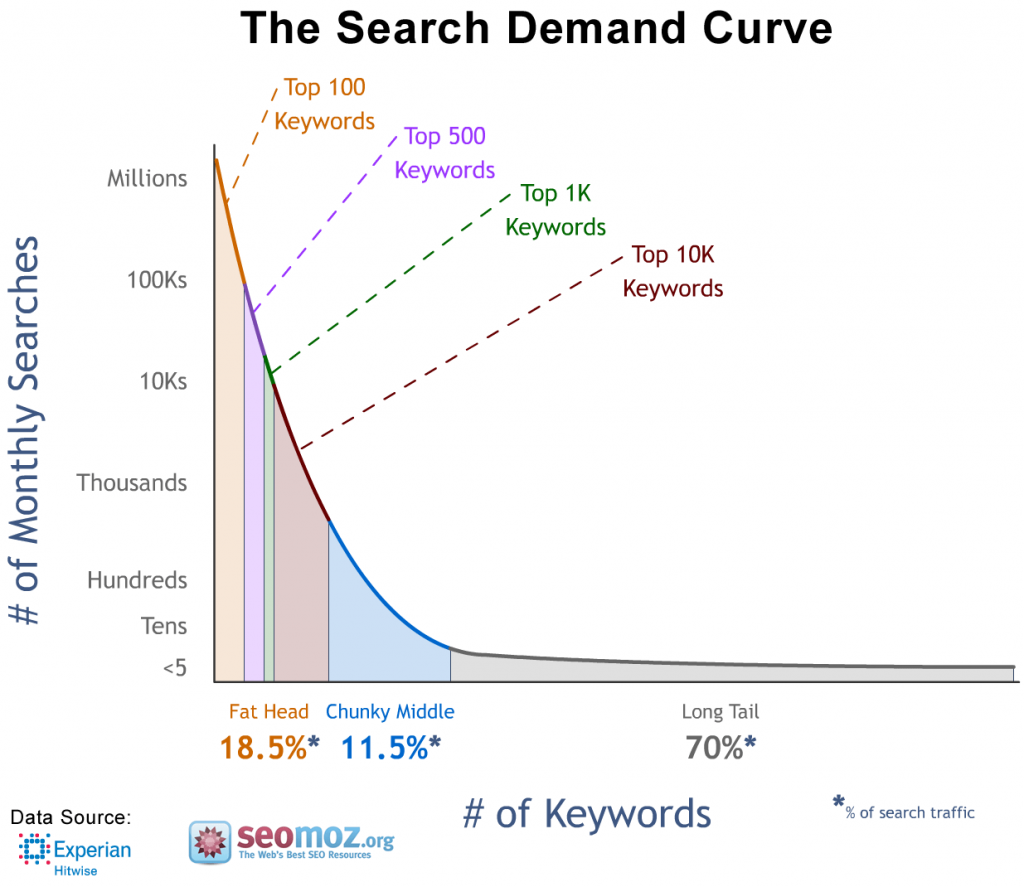
You need to use ultra-specific longtail keywords for product pages for 2 reasons.
- It is easier to rank
- It is the keyword used by people who already have the intent to buy the product
What type of longtail keywords should you go for?
According to Neil Patel, 4-Word Keywords are perfect for product pages. This is because longer keywords are more descriptive.
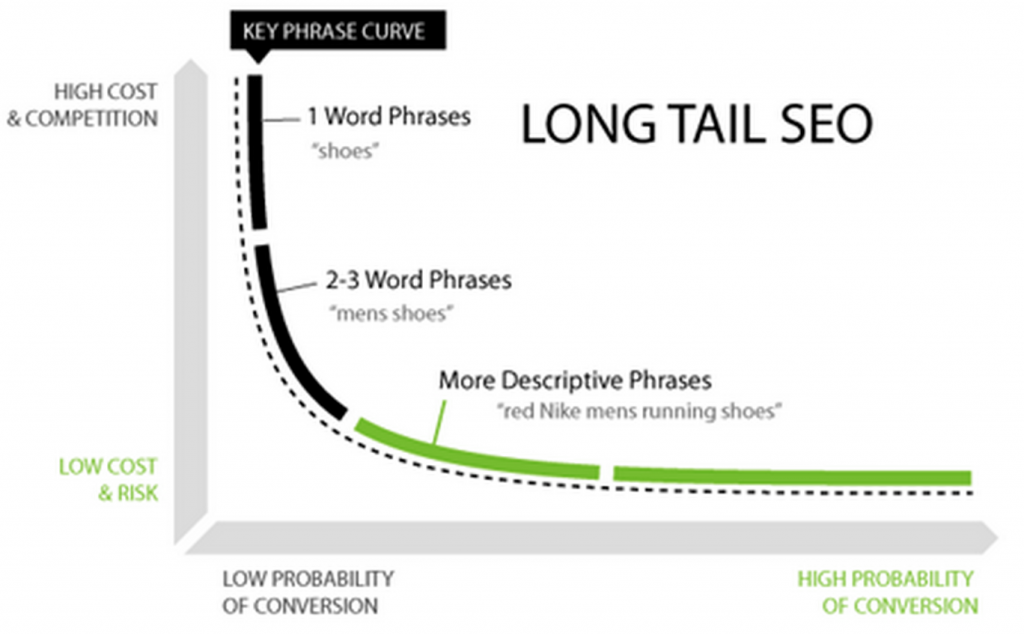
Just don’t go too crazy and include 10-word keyword – that’s going overboard.
Also, it is important that longtail should be as descriptive as possible. Why? So that people can find your product page.
Think about it. Which would you search for when you want to buy a Plasma TV?
“Plasma TV”?
Or
“Hitachi 39″ Class 720p Slim LED HDTV”
It seems that Amazon knows what to do:
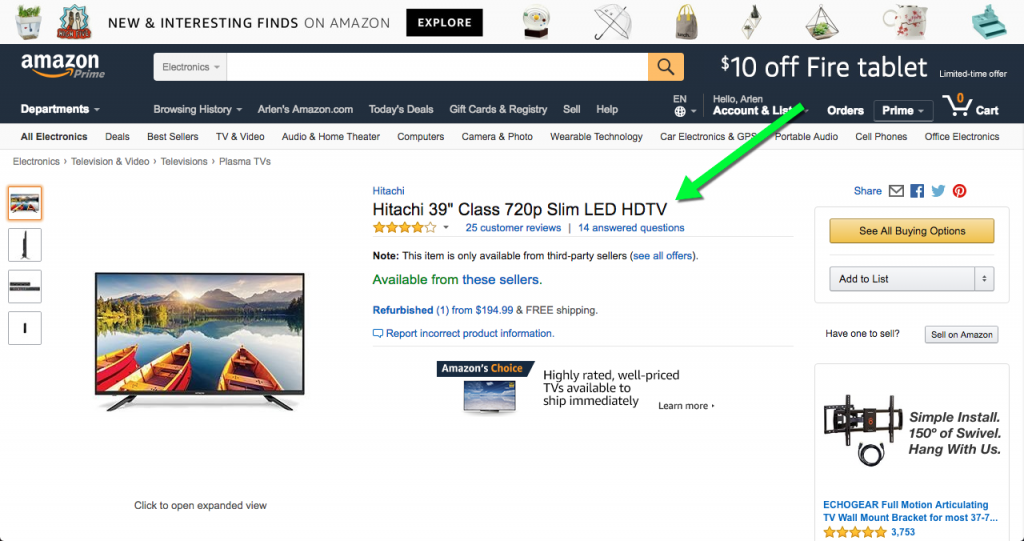
Once you have some keyword ideas in mind, be sure to plug them in the following tools to get longer keywords.
One of the tools that I love is Google Suggest. This is already integrated into the Google search bar so you don’t need to install anything.
Just type in a word and watch the search bar magically append more words to your search.

Another tool that I love to use is UberSuggest. This allows you to get some longtail keyword ideas through particular letters.

Gather all the keywords in a spreadsheet.
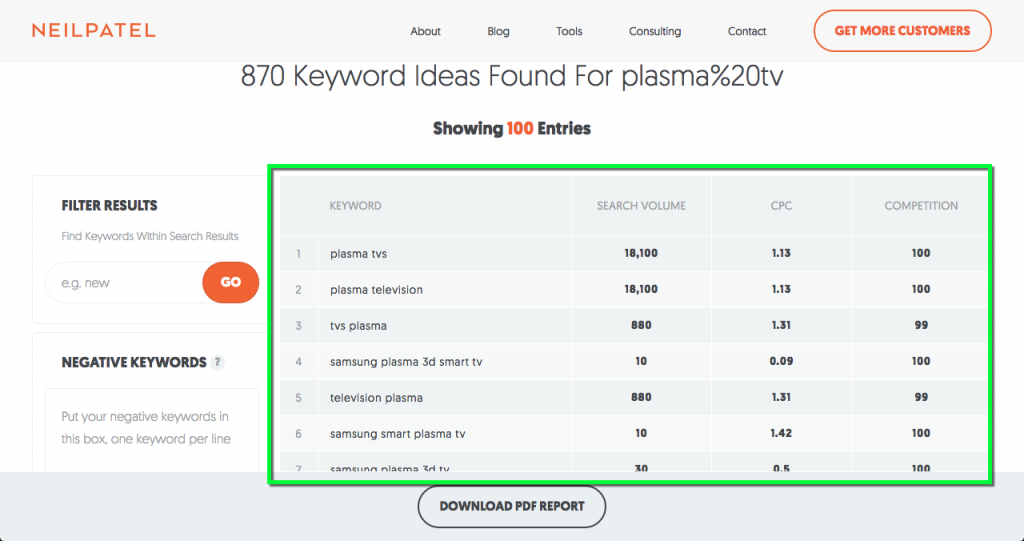
You can use these keywords later as you plug them in Google Keyword Planner for competition tracking.
Look for Low Competition Keywords
The second characteristic that you should look for is low competition.
Why?
The lower the competition, the higher your chances of ranking higher on the search engines.
Ideally, you’re looking for a keyword that has a considerable amount of search volume but with a relatively low number of competitive websites.
If you find it hard to find your gems, you can always go for keywords with low competition with a few searches per month.
You can find a keyword’s competitiveness level through Google Keyword Planner. Simply plug in the keywords that you got in your spreadsheet.

Then click Competition 2x to get the low competition keywords on top.

Copy the keywords to the side.
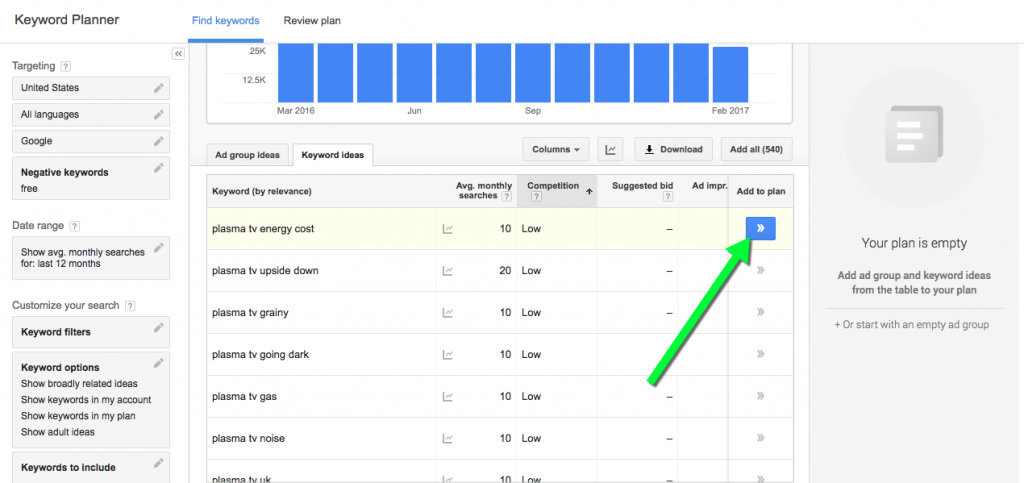
And export the spreadsheet.
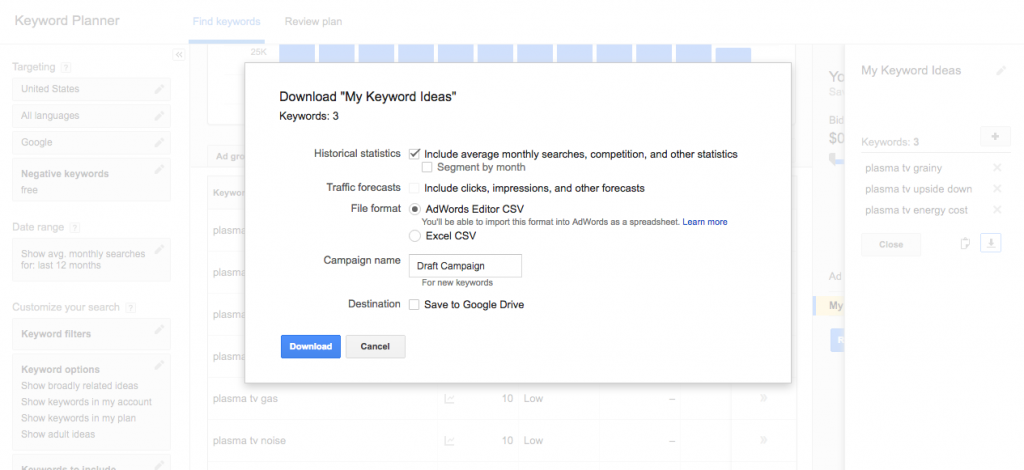
The result?
You should have a list of longtail keywords with a small amount of searches but have really low competition.
This is your golden keyword list.
I’ll show you how to add more keywords in the next step.
STEP 2: Learn How to Steal your Competitor’s Traffic
I’ll be honest. Your brain has its limits.
While you can amazingly be creative in coming up with keyword ideas, there will always be keywords that you’ll miss.
The solution?
Consult the competition.
Here’s the simple process on how I steal my competitor’s traffic with keyword research.
Get Keywords from Competitor Product Pages
You may have heard of this process before. Get a competitor website URL and plug it in Google Keyword Planner to uncover the keywords that they are using.
But what you’ll get are general keywords that they are trying to rank for.
What if you just look for competitor PRODUCT PAGES instead. Not WEBSITE, but PRODUCT PAGES.
For example, let’s say that you are working in the Toys Niche and you are selling a Funko Pop of Belle.

You then have to head to Amazon or other competitor websites and look at their product pages.
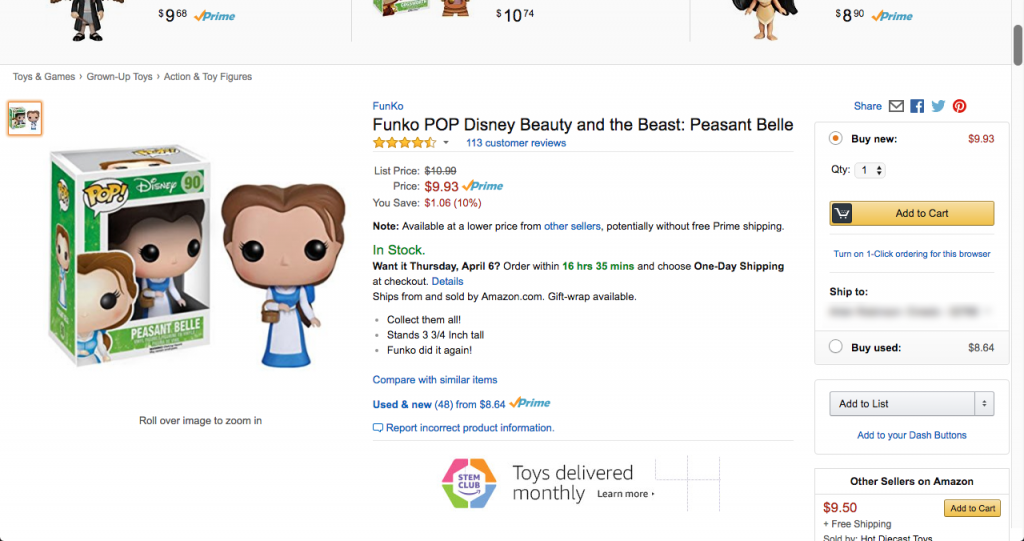
Now, you may copy the URL and paste it into the landing page section in Google Keyword Planner

Click Get Ideas

Look at all the keywords that I found.

As you can see, these are not ordinary keywords. These are longtail keywords that are used by your competitor. You can repeat the process in their other products and try to uncover keywords that they may have not covered.
Don’t forget to include the keywords in your spreadsheet.
Happy keyword hunting!
STEP 3: Do the One Thing That Most eCommerce Websites are Not Doing to Rank Higher
Why do some online stores sell more than others?
It has nothing to do with SEO.
Here’s what most online store owners are doing.
- They create an online store
- Import product images and descriptions
- And they promote
And that’s when they fail.
Here’s why…
Not everyone who will visit your eCommerce website will buy from you.
There will be people who will not trust you – the Skeptics
These are the people who will wonder who you are and why should they give their credit card details to just buy from your website.
They will be people who will not care about your website – the Indifferent.
These are people who don’t care about what you are offering and doesn’t see the need to buy anything that you offer.
There will be people who will be scared of you (Yes! It can be that crazy) – the Worriers,
These are the people who think that they will get scammed and you will get their credit card information.
It is your job to convince them to open their wallets and buy.
How do you do that?
Content.
Keywords without content is useless.
Here’s why you need content on your eCommerce website.
- You need content to prove that you can be trusted.
- You need content to stand out from the crowd.
- You need content to show that it is worth buying from you.
eCommerce website owners usually make the mistake of just focusing on their product pages and not implementing any form of content marketing. Useless.
Think about it this way.
Let’s say that you are lucky to make a few sales here and there because you managed to rank your website on the first page of the search engines.
But once your website drops, do you think that your customers will look for you if others are providing the same products? Yes if they trust you. No if they think that they can get the same thing from another website.
Stop Being Another Website.
Become an influencer in your niche by creating content pages in your niche. If you do that, the traffic and link juice from your content pages will naturally pull your product pages higher.
Here’s an example.
In the fitness niche, Blogilates is a really popular brand. It started as a Youtube Channel that has millions of followers.

The author, Cassey Ho, also runs an online store called Ogorgeous.com that sells fitness-related stuff like yoga mats, drinking bottles and activewear.

If you will look at her products, they are not even optimized for a keyword.
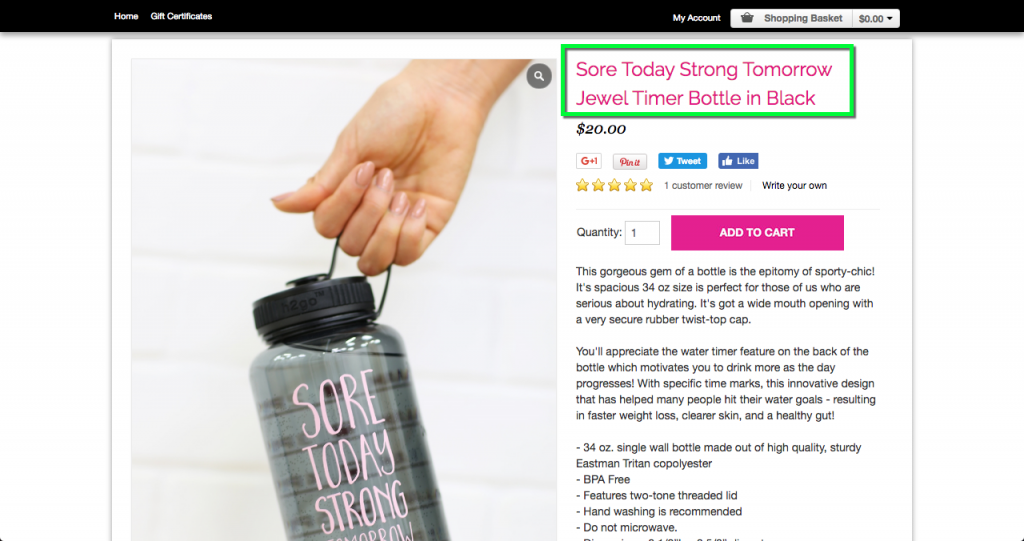
What is optimized? Her videos. Look at the keywords.

The takeaway?
Optimize your content to solve your prospect’s problems and they will eventually buy your products because they know and like you.
NOTE: Use Medium Tail Keywords for Content Pages
For content, use medium tail keywords. Why? It has higher search volume.
Higher search volume = more readers.
My keyword research process for content is different. Instead of aiming for 4-word keywords, I usually go for 2 or 3-word keywords that has medium competition.
Here’s how I do it.
1 – Gather Ideas in Niche Blogs
Niche blogs are the perfect source for content keywords. Why? That’s because they have already done the keyword research for you.
They have showed up on the first page of Google for a reason – it means that there is a considerable amount of people who are interested in that topic.
To search for niche blogs, use this search query: “topic” inurl:blog
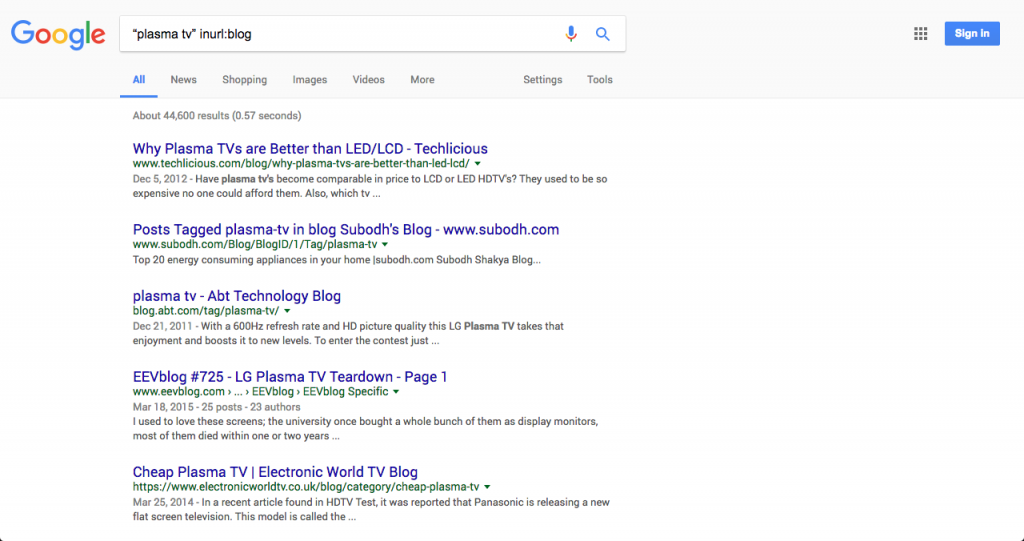
Then, visit the blogs and note some titles that are interesting to you. I take note of the keywords used in the titles and related keywords used in the text.

Continue until you find at least 20 interesting keywords.
2 – Plug your Keyword Ideas into Google Keyword Planner
Then, we will use the powerful competitor spying strategy that we have learned above. We will use the URL analysis feature of Google Keyword Planner.
To do this, simply copy the URL and paste it in the landing page section of Google Keyword Planner.

Look at all the keywords that I have uncovered.

And if you need ultra-specific keywords, you can use the URL of a specific blogpost instead.

It turns out that the keywords are more specific if you do it this way.

Choose and export the keywords that you like.
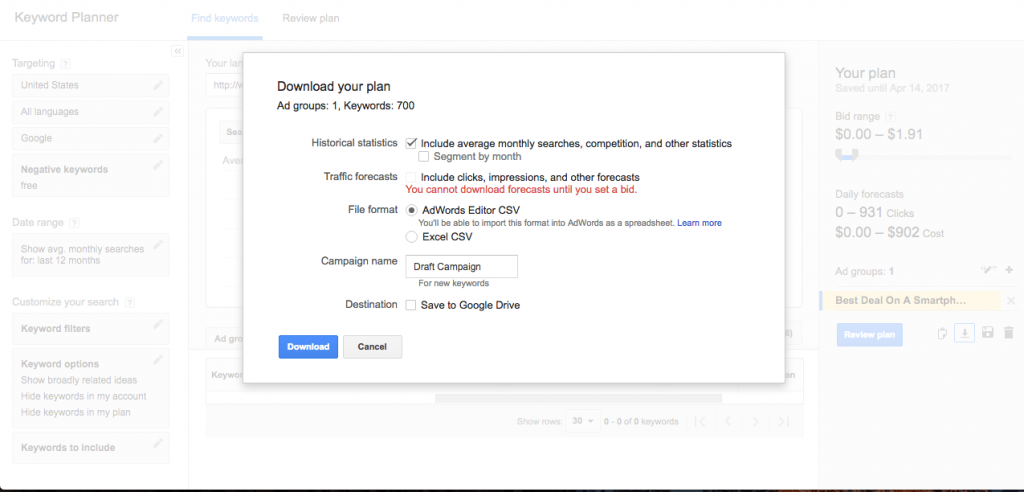
Now, it is time to analyze the keyword’s competitiveness level.
3 – Look for Keywords with Medium to Low Competition
Above, you have learned to sift through your keyword list to find low competition keywords.
That’s great.
This time, you’re going to sort your keywords to look for Medium Tail keywords with medium to low competition.
Again, click Competition. This will sort the keywords according to their competitiveness level.

Take note of the search volume. The higher the better.

You should now have a list of medium to low competition keywords for your content. Now it is just the matter of writing the content to get more people into your eCommerce website.
Conclusion
Recap: The recipe for effective keyword research is simple.
- Find the Right Keywords
- Steal your Competitor’s Traffic
- Do what other eCommerce Websites are Not Doing
This process is different from other eCommerce keyword research processes that focuses solely on product pages. Instead of product pages, this keyword process also focuses on using medium tail keywords on content – the thing that most eCommerce websites are not doing. The process works with the principle of shared link juice – As content pages rank higher, product pages also rank higher. These rankings can result to more traffic and sales.
Keyword research is the first step to getting more traffic and sales. The next step is content creation and promotion. It will not be that easy and you should be willing to do the hard work to succeed.
What do you think of this keyword research process? Did you do it? Tell us all about it below.

I have never really worked on optimizing my keywords for my store, however I see that it is really essential these days. I need to do keyword research and then come up with content around these words.
I have been able to study my competitors keywords and steal some of their traffic by optimizing for some of those same keywords. Why not benefit from the research that they have already done.
There are so many niche blogs out here, that I have been able to easily capture some effective keywords that they have optimized their posts for. All the information is out there for you. It’s just a matter of time.
Pingback: How to Use Content Marketing and SEO to Compete with Amazon
very good post and informative for me but the point is to found very difficult to trace step 2 for keyword research process